There are just a handful of serious yards with a decent output of aluminium built sailing yachts in the world. Of course, as it really is the sailing heart of Europe the least, if not for the world, there are most of them based in France. Grand Large Yachting Group is a conglomerate that has two of the most renown brands in its portfolio: Allures and Garcia Yachts of Cherbourg. I was happy of having granted access to this yard a few days ago.
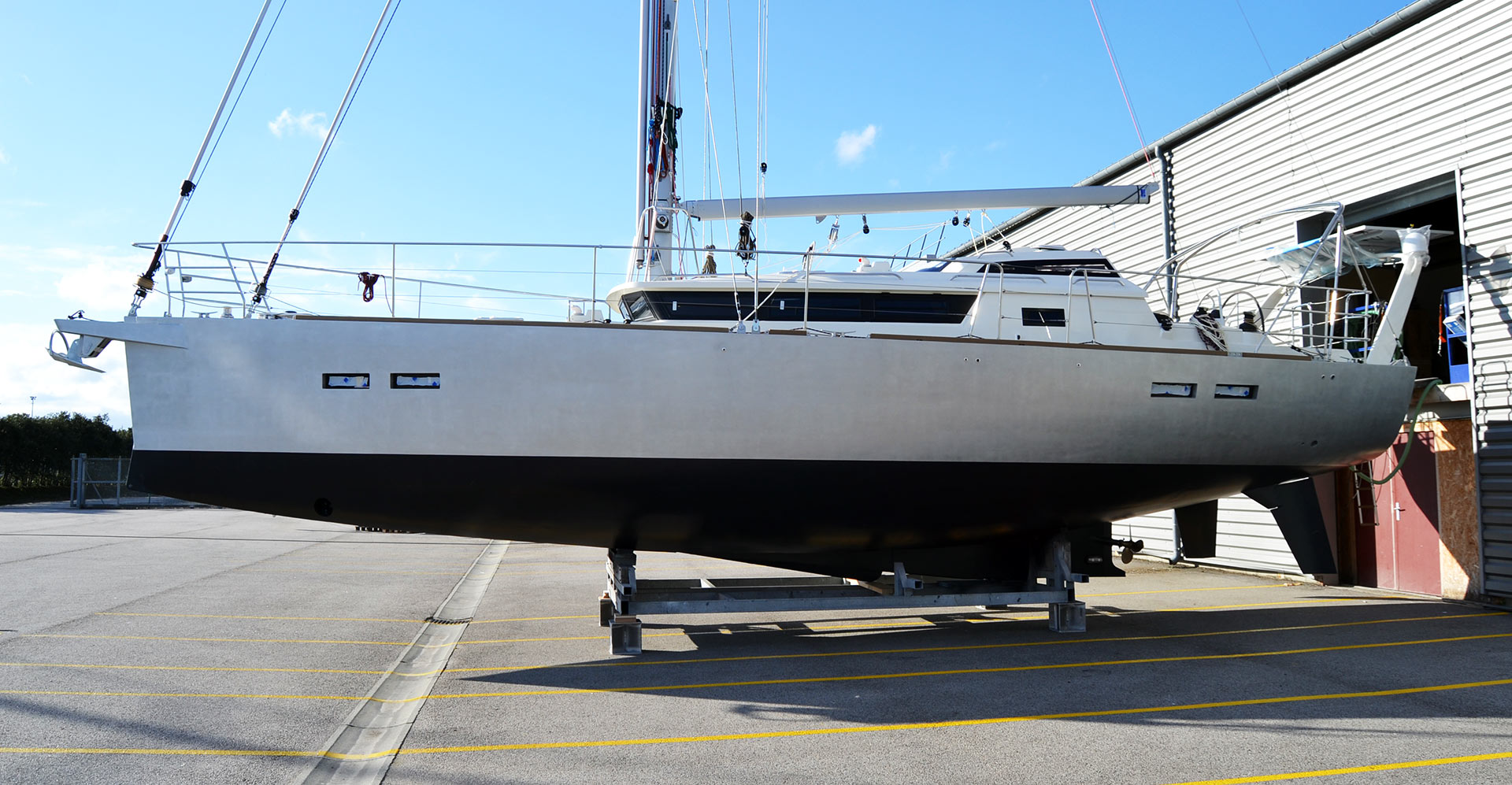
Arriving at the place the sun was shining as it was for not letting go this awesome summer of 2018 and even for it was mid-November already, the temperatures rose to a warm 14 degrees Celsius above Zero. A great day with a blue sky. But some wind was coming at us from the Atlantic Ocean as a harbinger and foreshadow of what the boats made here are to withstand: Real tough weather, real hard sailing.
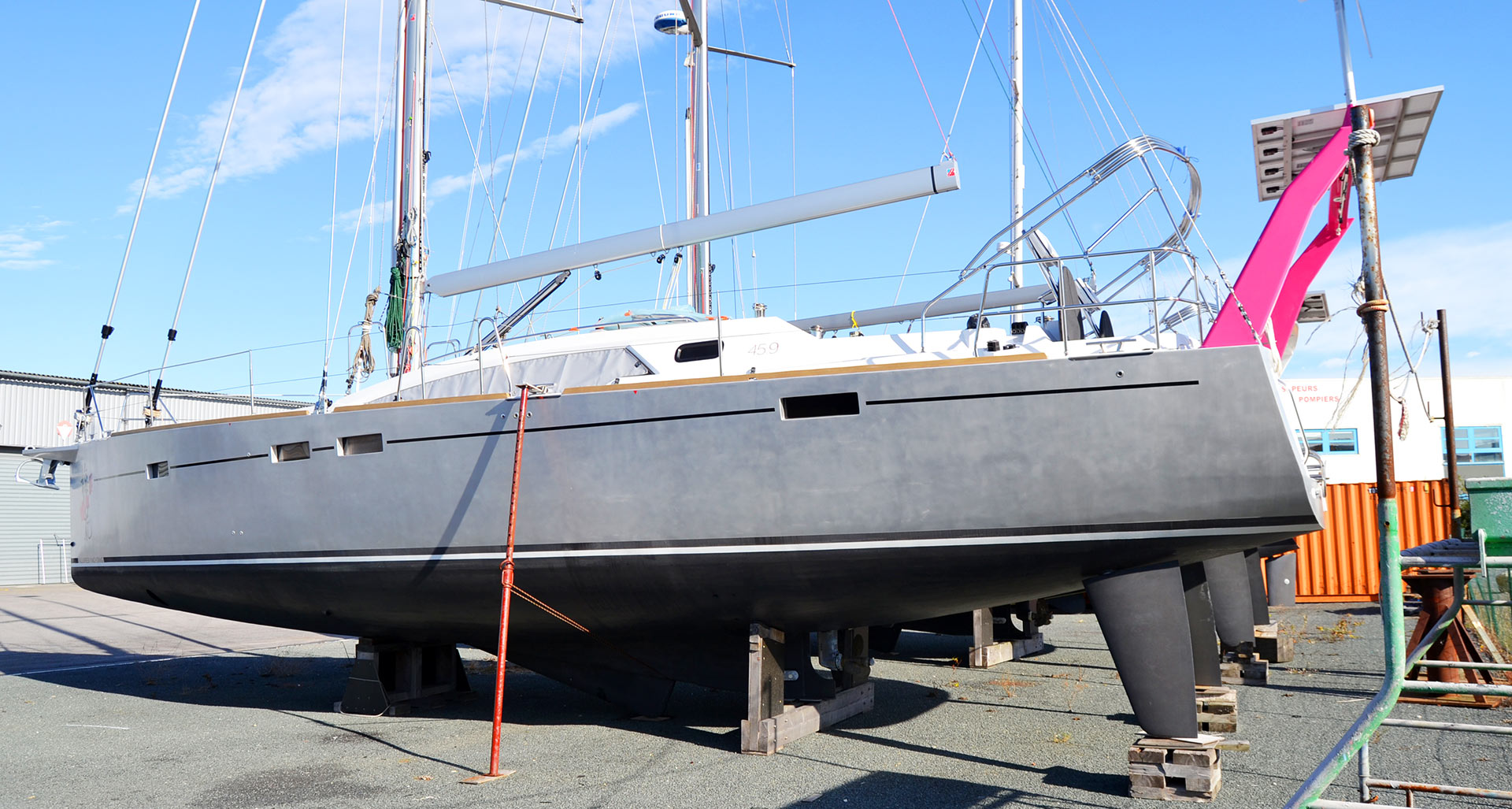
Up to this point I have seen the Allures and one Garcia Exploration just on dry land in various boat shows. Early 2018 I´ve had a great interview with sailing legend Jimmy Cornell on the Garcia Exploration 45 which he was a key in developing. Now it was time to actually see where these boats are being made and when Cyrille Corlay, Sales and Marketing Manager of the yard, greeted me, he instantly invited me inside to the workshops.
About the DNA of Garcia and Allures Yachts
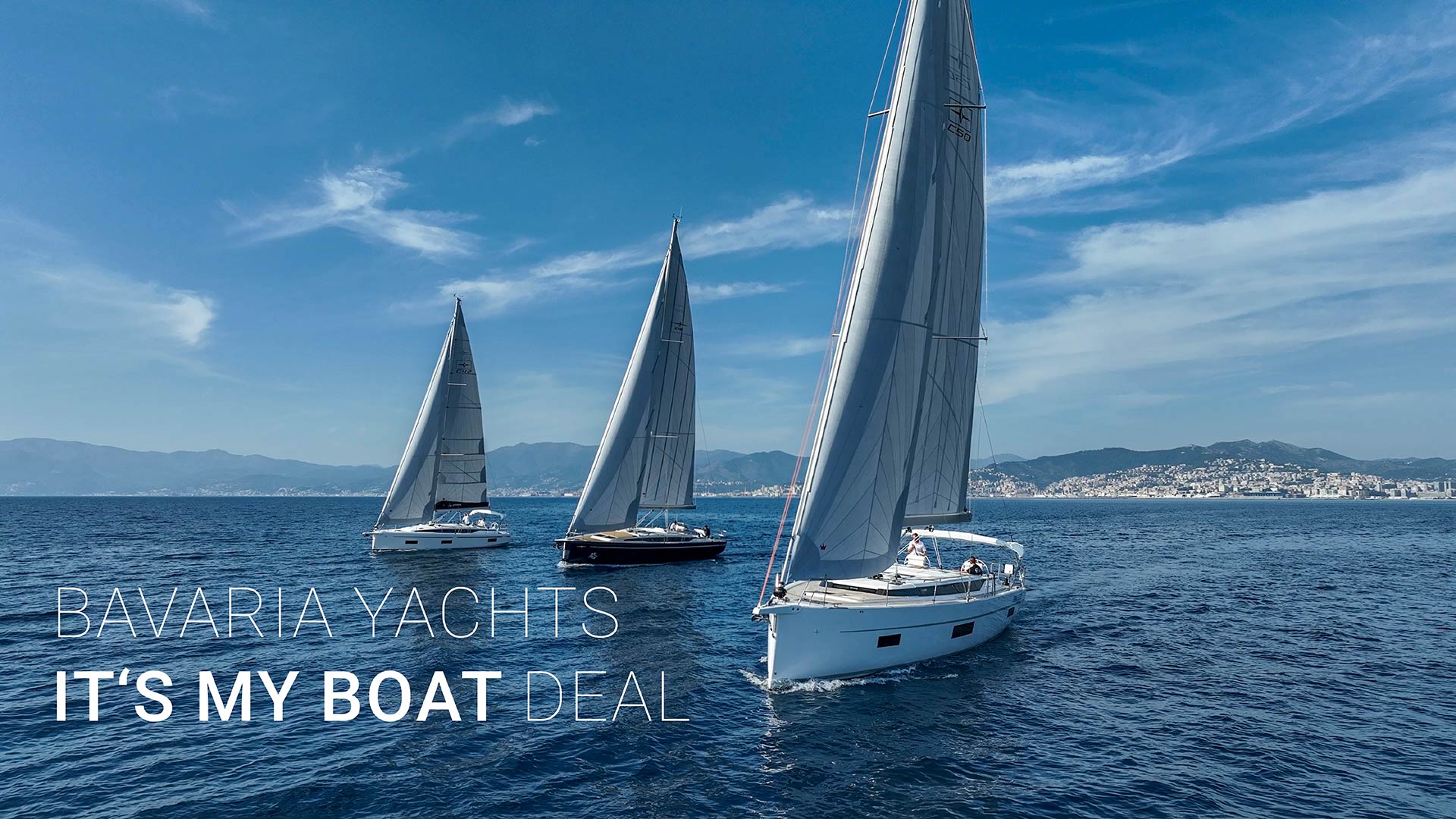
But what is it with Garcia and Allures?, I asked Cyrille: “Well, let´s begin with Allures”, he said. As the story goes, two friends – sailors of course – couldn´t find the right boat for their dream circumnavigation. There simply was no manufacturer making it the way they wanted to sail. Having acquired some money in their respective jobs with Boston Consulting, they hired famous naval architect Olivier Raceaupeau and developed “their” perfect boat for the long haul. They had the boats built and fitted. “But then people, who saw the boats, really liked them and so the first of them two was sold to new owners, then the second as well.”
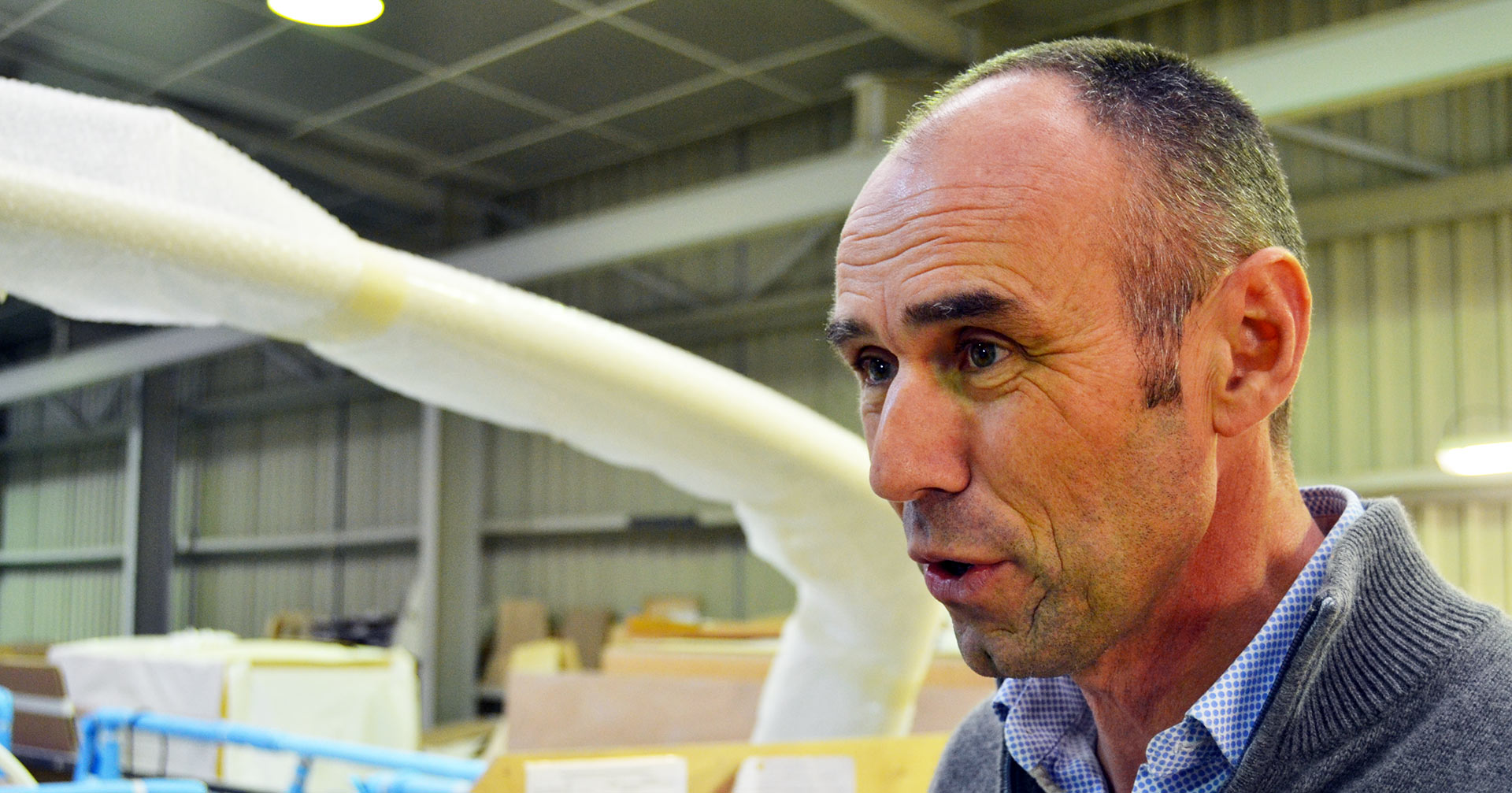
And this is how Allures Yachting began, not so long ago, as Cyrille tells me: “In the year 2003 the company was finally founded and began production.” The Allures is a blue water cruiser, says Cyrille, made for the sailing couple. It is meant to be sailed with ease for a long period of time. “She is a boat for tropical waters, has a nice wide cockpit, good sailing characteristics and lots of stowage for this kind of trip.” Of course, an Allures can go to High Latitudes as well, thanks to the strong aluminium hull, “but more for a couple of weeks, like a short visit, it´s not meant to stay there for months”, clarifies Cyrille. That´s the job of the Garcia …
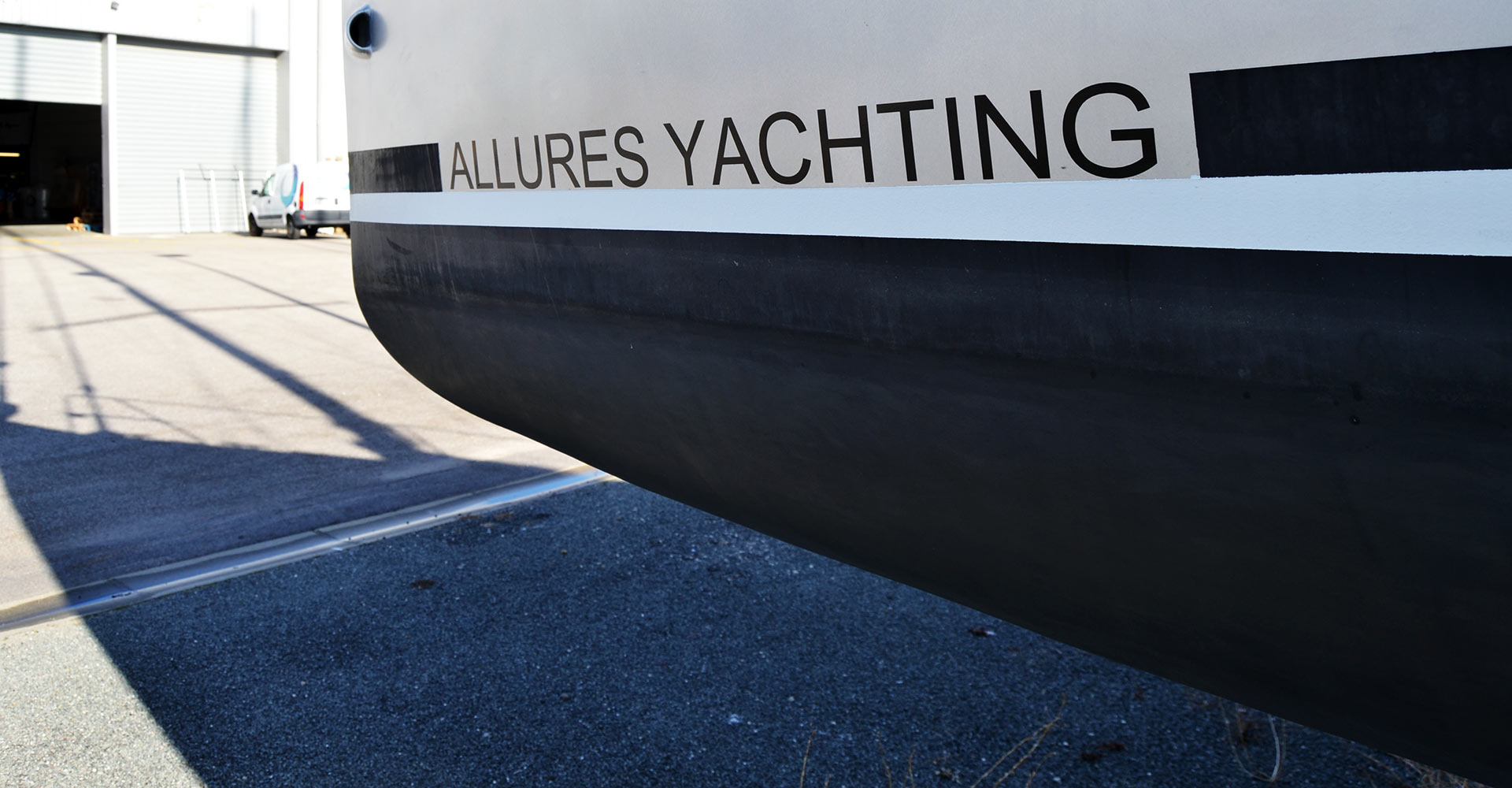
Garcia yachts are stepping up some levels when it comes to exploring the distant waters and areas of our planet: “This boat is a real explorer”, says Cyrille and cites the slogan under which the boats are sold: “Everywhere you can´t go!” And it is true: Garcia boats feature all details an owner might be seeking in his yacht to go where at least a very limited number of persons have gone yet.

No wonder that the series of Garcia yachts is called “Exploration”. The design is more voluminous, a deep V-shaped hull for ultra-stable and comfortable sailing, strong thick hull plating and a ton of details I would be inspecting later on. As Cyrille finishes his coffee and stands up to finally walk me around in the yard, he smiles: “By the way, the two guys who invented the Allures concept … they´ve never left for their circumnavigation.” Still owning and running the company, both are happy managing Allures Yachting and designing newer generations of boats.
Aluminium yachts 100% Made in Normandy
As we enter the workshop, it´s the usual walkway “pontoon” at which hulls in various stages of fitting are “docked” sternwise. I count no less than 4 boats in the big hall. Garcia currently offers five sailing boat monohulls ranging from 45 to 75 feet of which the Exploration 45 and the 52 are the most sold. With Allures Yachts, there are three sizes from 39 to 45 and 52 feet available. Both brands are currently in the process of making a catamaran to being part of the multihull-boom.
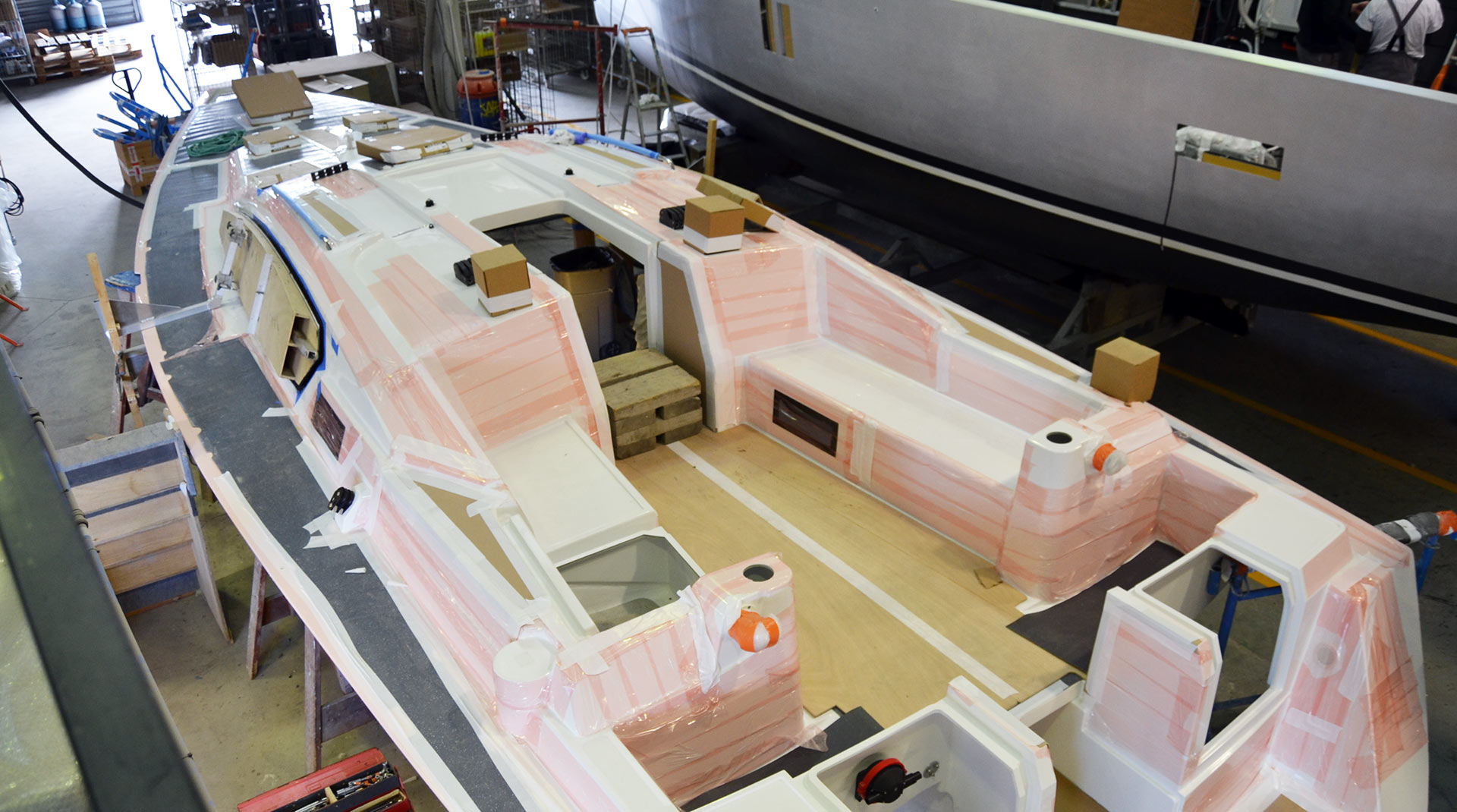
“Allures boats have a distinct feature”, says Cyrille as we are standing above a 45.9: “The deck is made of GRP.” That has some nice effects to it, like being able to have smoother designs, more rounded shapes that are pleasant to look at. “Another point is the weight and of course the time to build a boat.” Nevertheless, Cyrille assures that stability and rigidity of an Allures with a GRP-moulded deck isn´t inferior to an aluminium-made monococque: “An Allures could sail safely completely without a deck.”
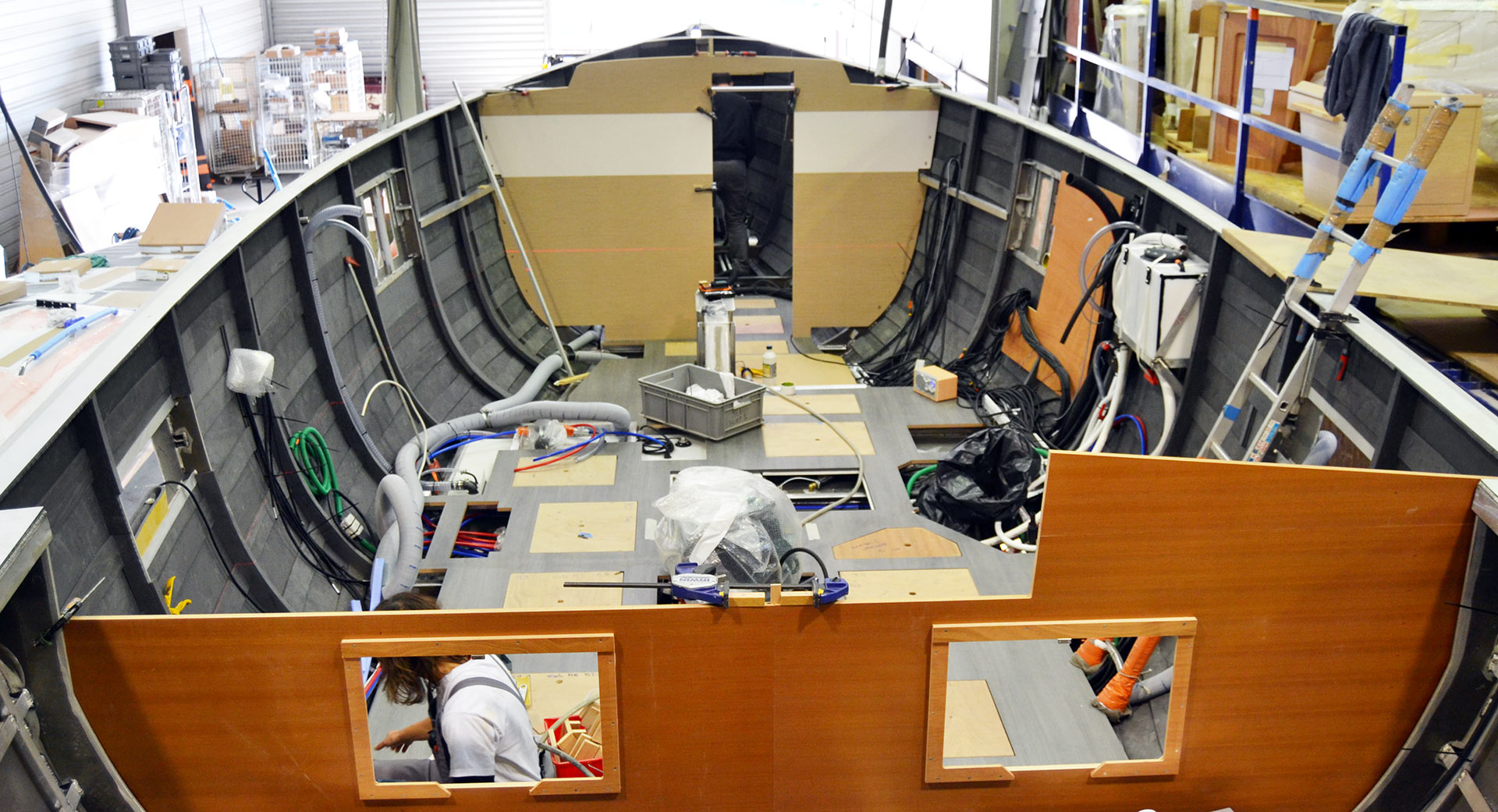
As we walk along the “pontoon”, Cyrille shows the different stages of a boat in the making. One aspect was pretty interesting: “These are yachts which are 100 per cent made in Normandy.” The aluminium hulls are welded at a company-owned facility nearby, as well as the wooden fittings and furniture and the GRP-made deck, which is also a company-owned supplier nearby. “The worldwide crisis of 2008 which has been especially devastating to the French boating industry saw a big number of brands going brankrupt, insolvent, being sold or closing down completely. There were only two French brands surviving reasonably in shape: That was Beneteau and … us.”
Meant for Blue Water and High Latitude sailing
“Garcia and Allures boats are fundamentally different”, says Cyrille: “An Allures-owner never would consider buying a Garcia. It´s the same vice-versa.” For Cyrille that´s a crucial thing to understand. Nevertheless, both boats are cashing in on each others concepts. The insulation, for example.
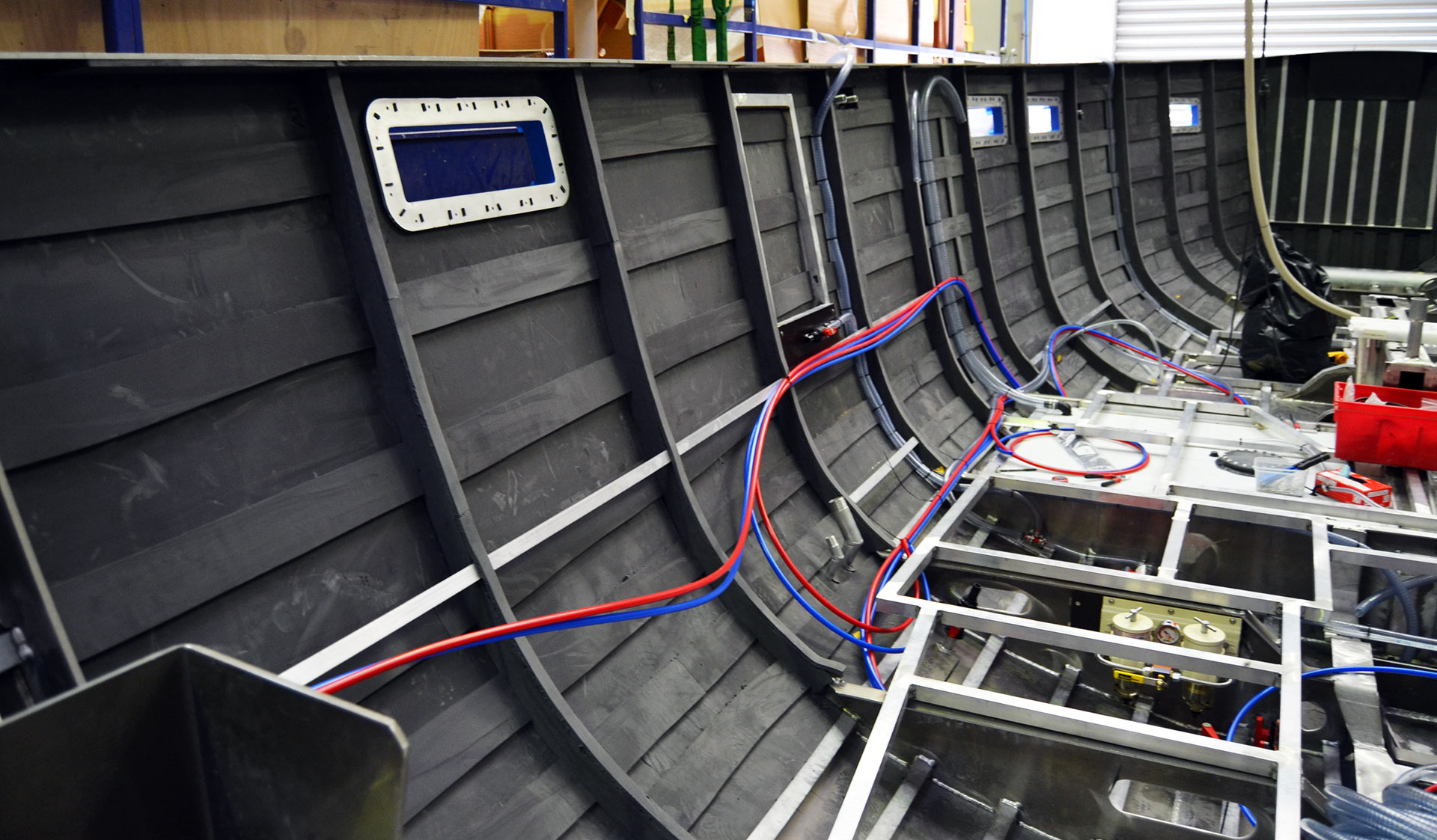
Both yachts will be thermally insulated, which I proof by stepping into an Allures-hull in the making. It´s a black foam of some 3 centimetres thickness. The foam will be cut to stripes and put to the hull by sticking it between the aluminium stringers. Additional, thinner, strips of foam will be glued on the joints of the stripes to ensure complete closure and proper fitting.
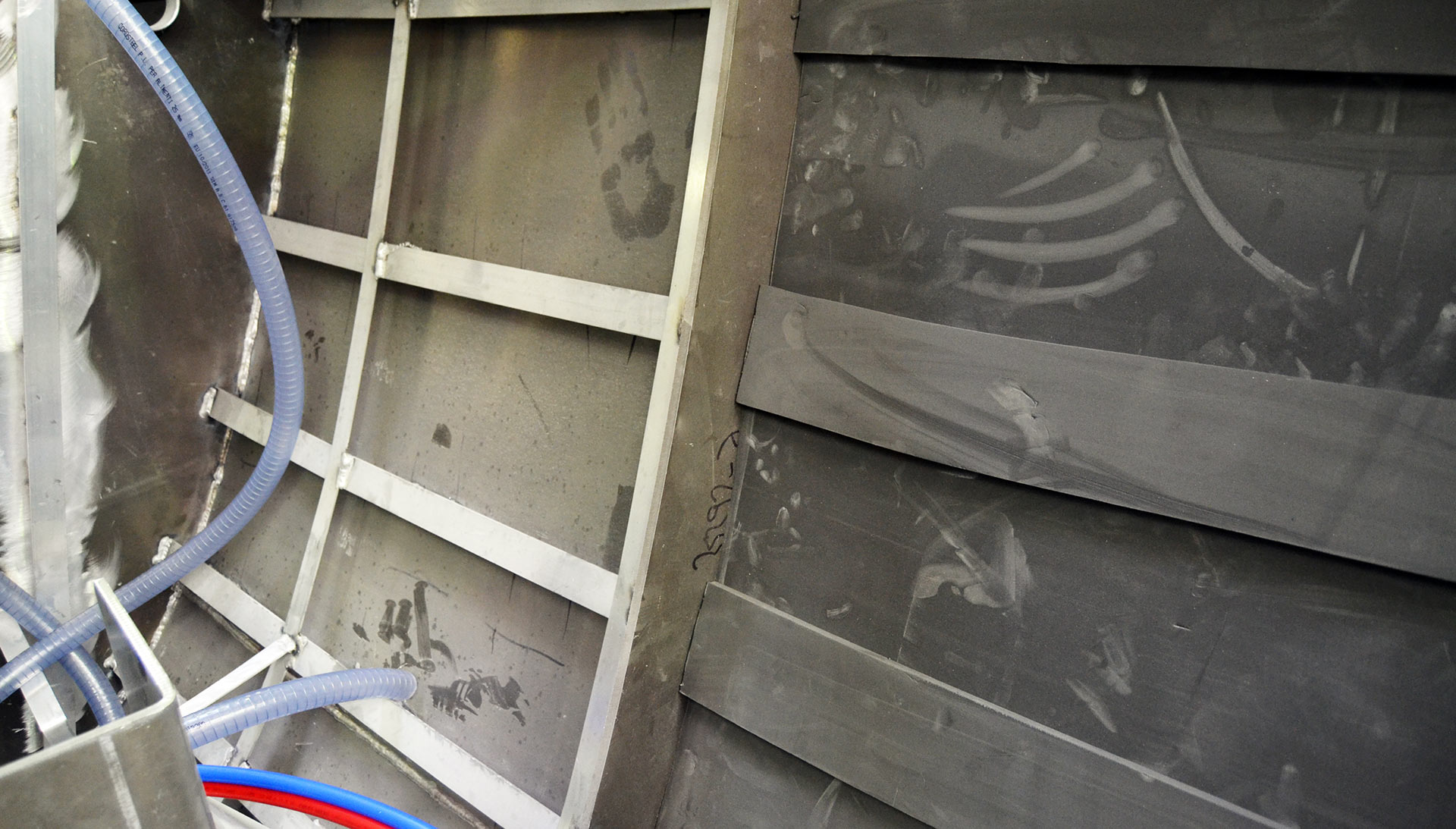
As I was wondering about this fitting method – up to this point I thought insulating material will be sprayed onto the hull – Cyrille says that this method is preferred to spraying because it is super easy to later remove the insulation partially in case a repair on the hull is needed. Sounds legit. As long as there are no air pockets between hull and insulator material, everything might be fine I guess. But here comes the Garcia …
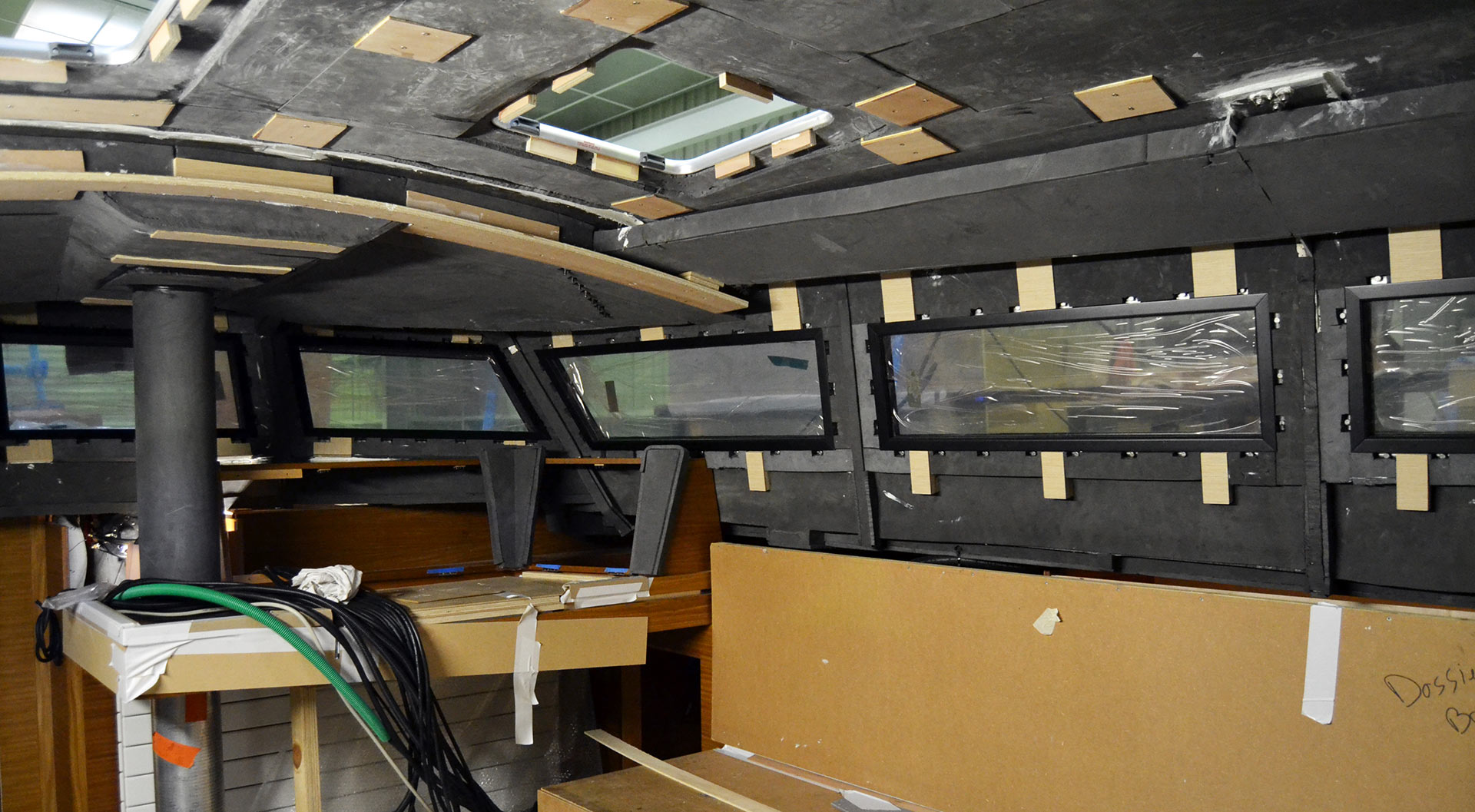
“These yachts are meant to stay in High Latitudes for months and months to come”, says Cyrille, “so thermal insulation is absolutely crucial to the whole boat.” Garcia yachts are double insulated, meaning that the foam covering the whole boat from ceiling to floorboard-level is 7 centimetres thick. As I stand inside an Exploration 52 I could witness the painstaking efforts in insulating the boat: Each and every little corner exposed to outside conditions is thickly covered.

A detail you barely notice when standing in the finished product: As for the bridge of the Exploration 52, only skilled eyes will notice differences to ordinary boats. Thick insulated glass windows for example or the big heating unit underneath the chart table, that, by the way, is mounted in a raised position forward of the nice salon with helm and engine controls at hand.
Garcia yachts: Exploring the wide world
Some details which define the boat´s unique properties can only be seen underneath the waterline, explains Cyrille and guides me to another workshop where a Garcia Exploration is currently fitted. “Look at the bottom of the hull”, Cyrille points to the keel plate: It was flat and especially strong. Right at the tip of the bow a thick plate with a hole was welded to the frame. “When in need of repairs, the boat can be put to a wire and being pulled out of the water, maybe on round piles of wooden trunks up a beach or slipway.”
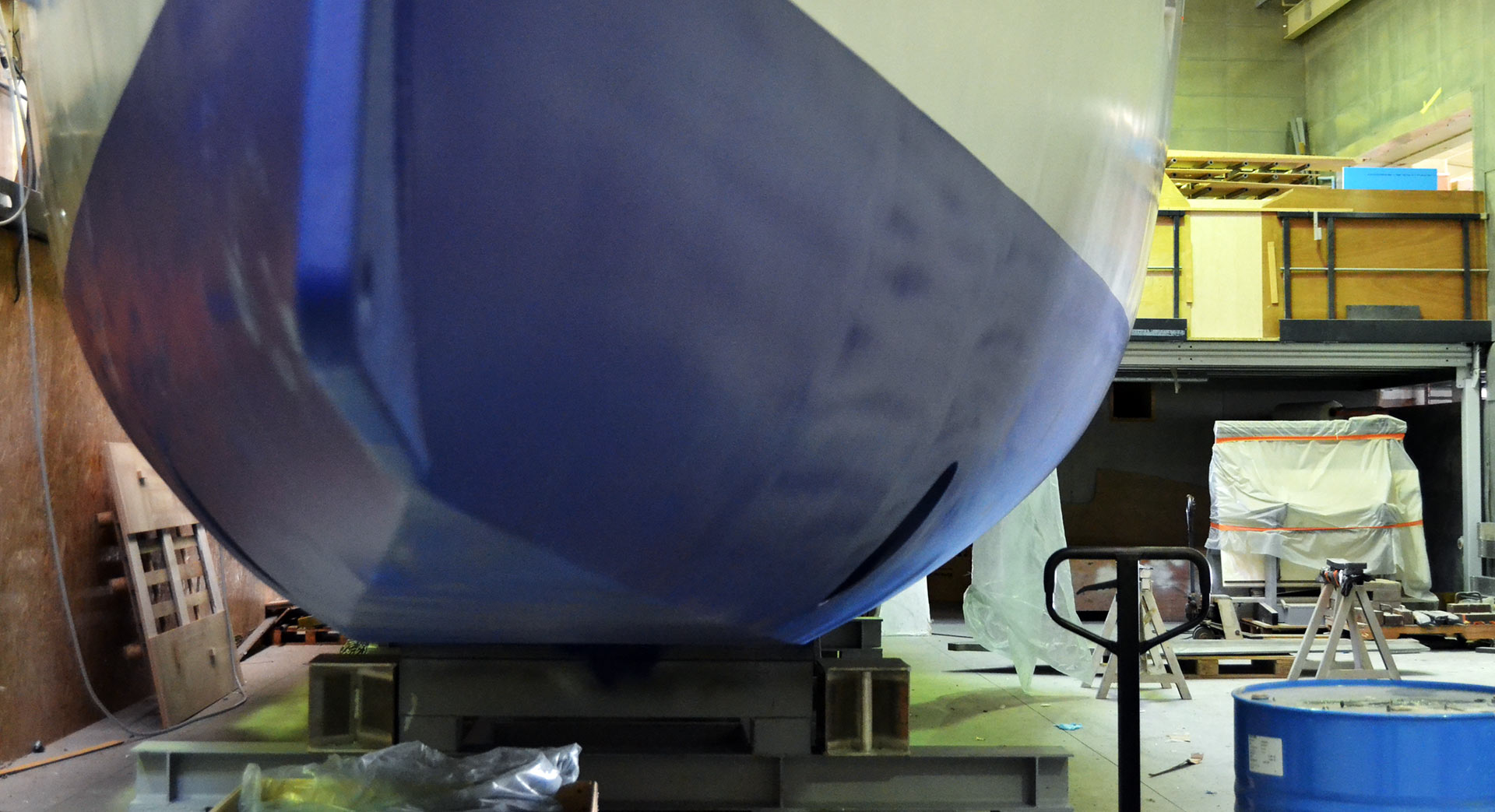
More details emerge, such a small skegs which protect the rudder shafts from approaching stuff floating underneath the hull. “Just in case the boat will heavily hit something bigger, the double rudders are designed to bent backwards and – see this thin line visible on the top part of the blade …?” I look carefully and, yes, I can barely see a thin line there.
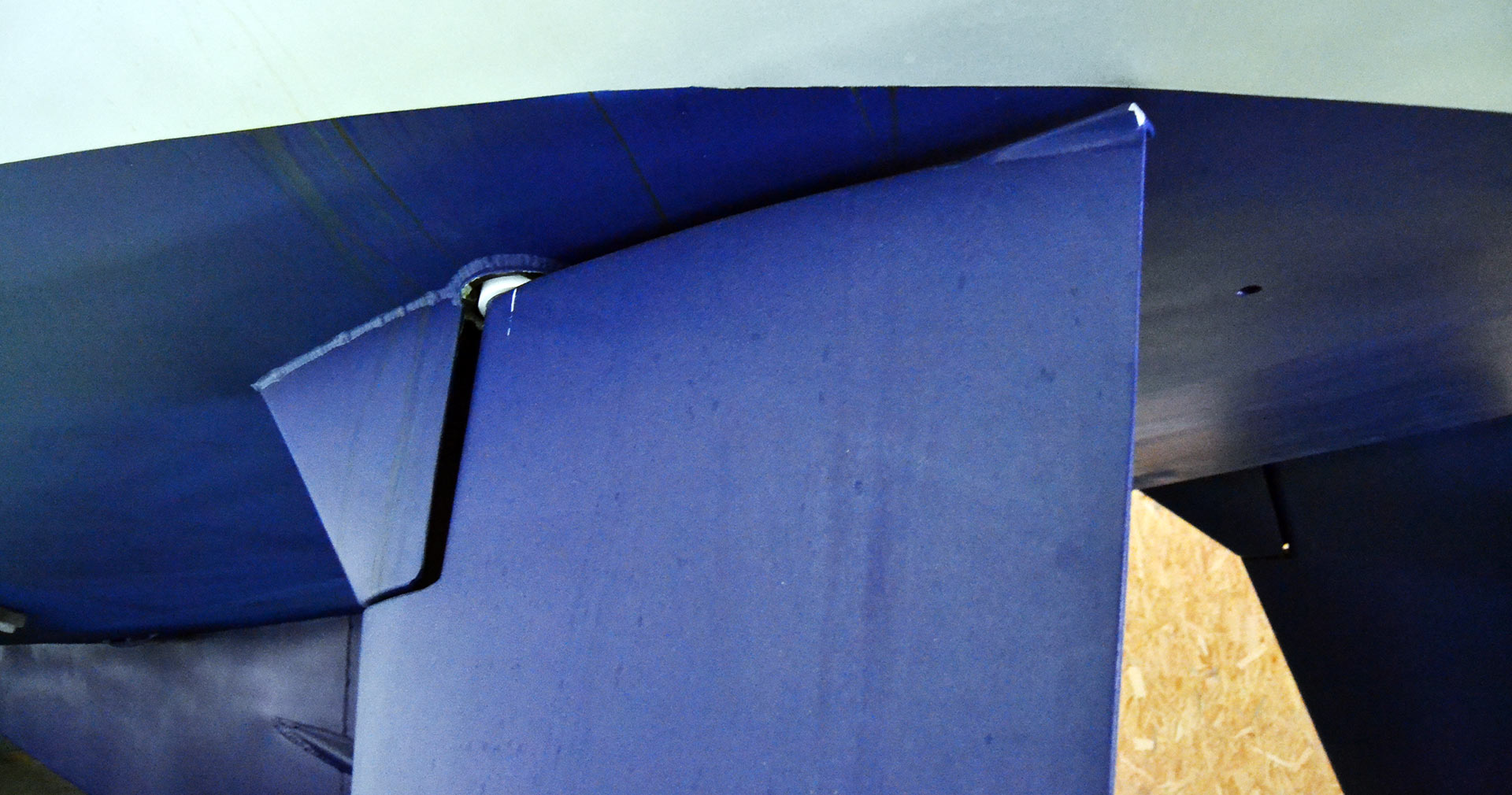
“This is a pre-determined break point. The rudder blades on the Garcia yachts are made of aluminium, except for this upper part, which is made in GRP. Now, if you hit a big rock in high speed, the blade will bend backwards and the upper part won´t damage the hull as the GRP will be shattered and break off.” Clever. And a safety feature as well.
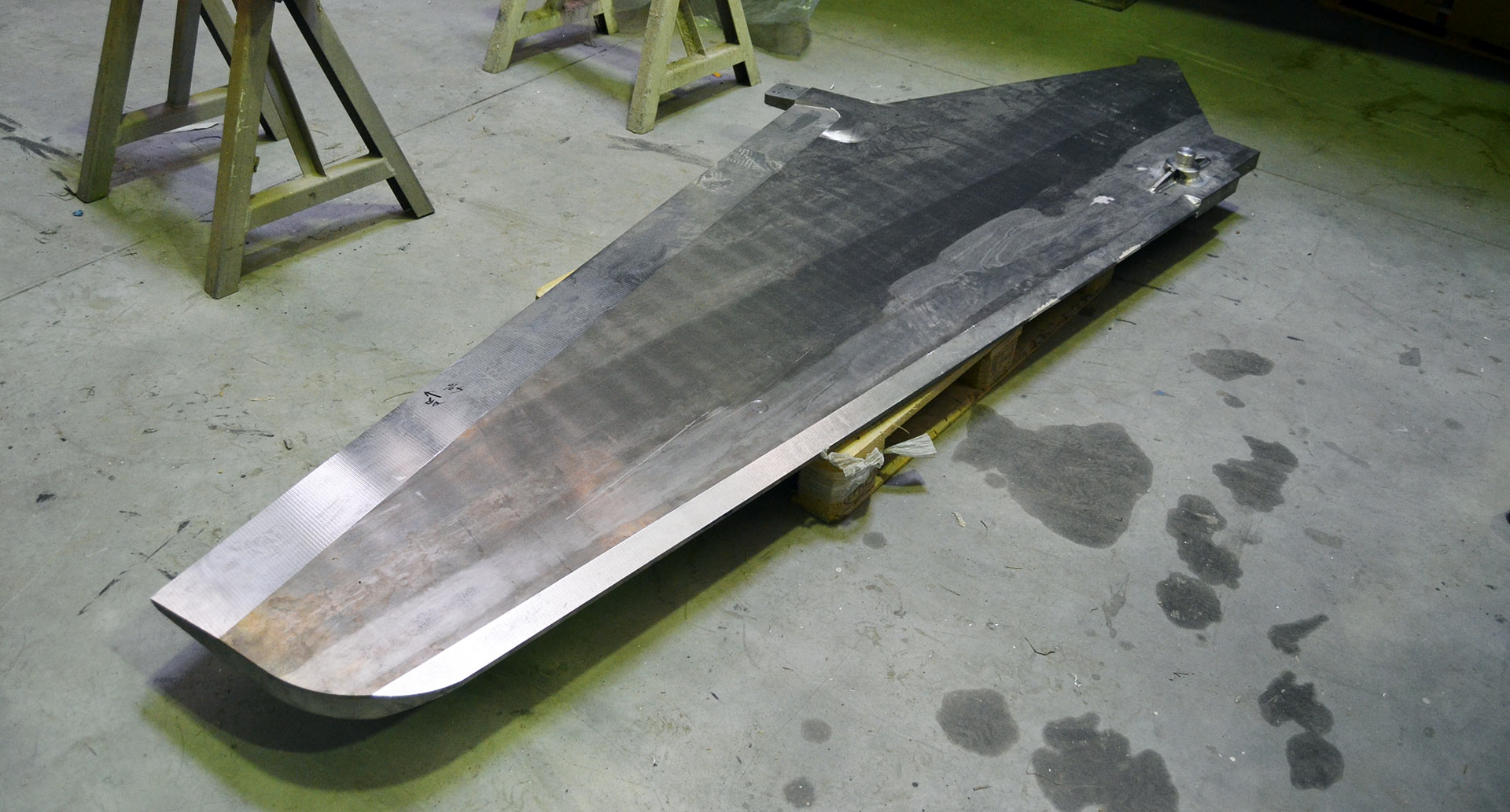
Both Allures and Garcia boats share all the benefits of having variable draft. For the sailing couple exploring the world I too consider this a must-have-feature on a yacht because entering shallow areas, going up-river or sneak into sheltered bays is essential and integral of going around the world. With Allures and Garcia the yard opted for the lifting daggerboard-version. “In this boat we have five tons of ballast right at the centre of gravity. The daggerboard is just there for better pointing abilities, not for adding stability and ballast.”
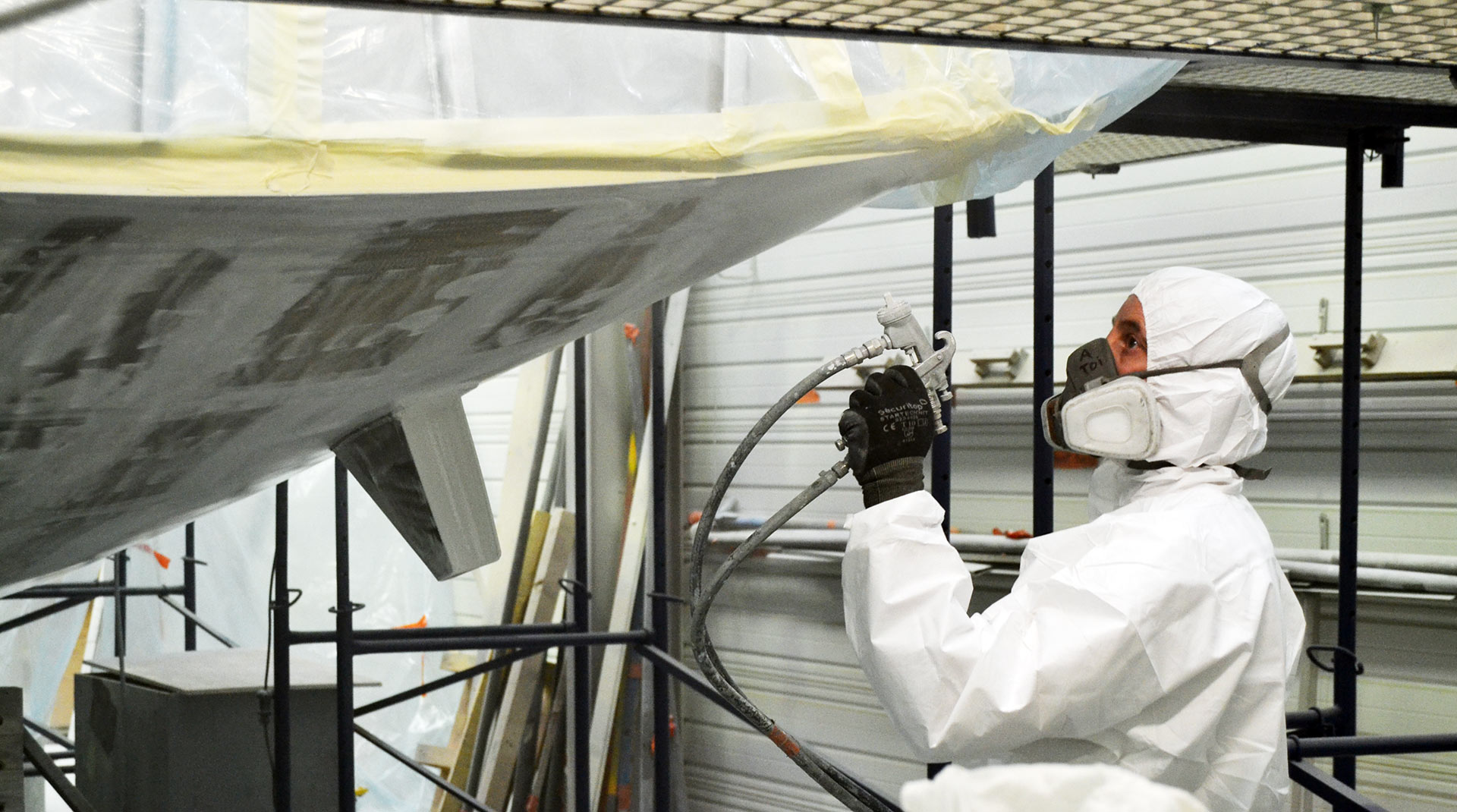
One thing of painting aluminium – and that honestly is one of the big disadvantages – is painting. With Allures and Garcia, hulls usually won´t be painted as this would mean that the owners would have to re-paint the boats every 10 or so years. But, as Cyrille says: “Crucial is three things for keeping the good advantages of an aluminium hull: First is mass-free electrics. Second is good anodes and third is a proper anti-fouling paint shop.” In this yard they take pride in spot-free underwater paint jobs for their products.
Pro Aluminium: Nice details on these yachts
I do notice some other details which I found particularly interesting. Details which are advocating the pro of having an aluminium boat as the material of choice when it comes to exceeding the ordinary cruising-range of a boat. Take the rudders again for example.
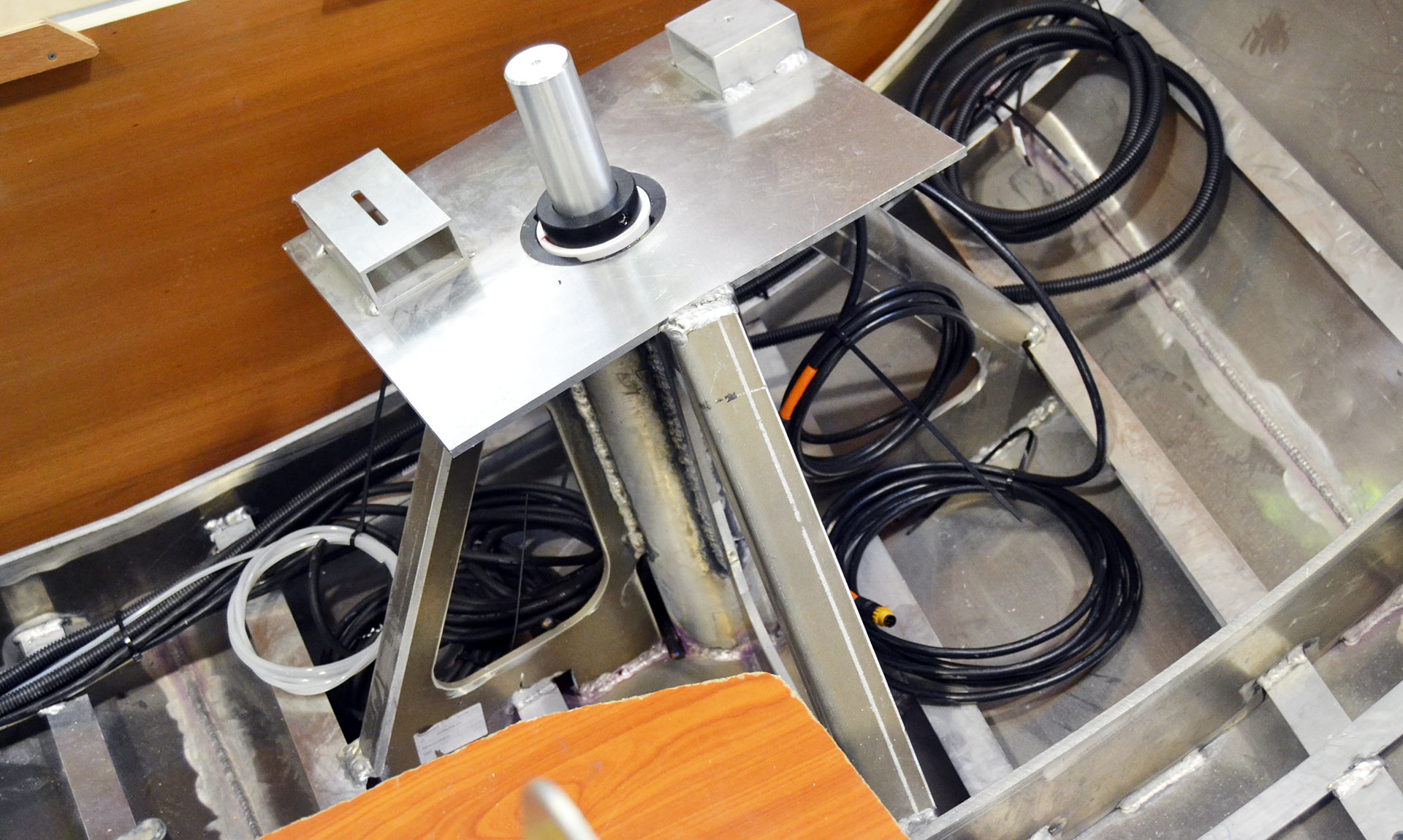
The mounting base with the shaft and the rudder bearings is of course made of aluminium metal and look at this construction! Shafts are aluminium too and oversized to take on the loads of the boat´s stern part when falling dry. Also, the bearings are super-thick and so rigid that it seems inconceivable that they could break even if one hits a big rock.
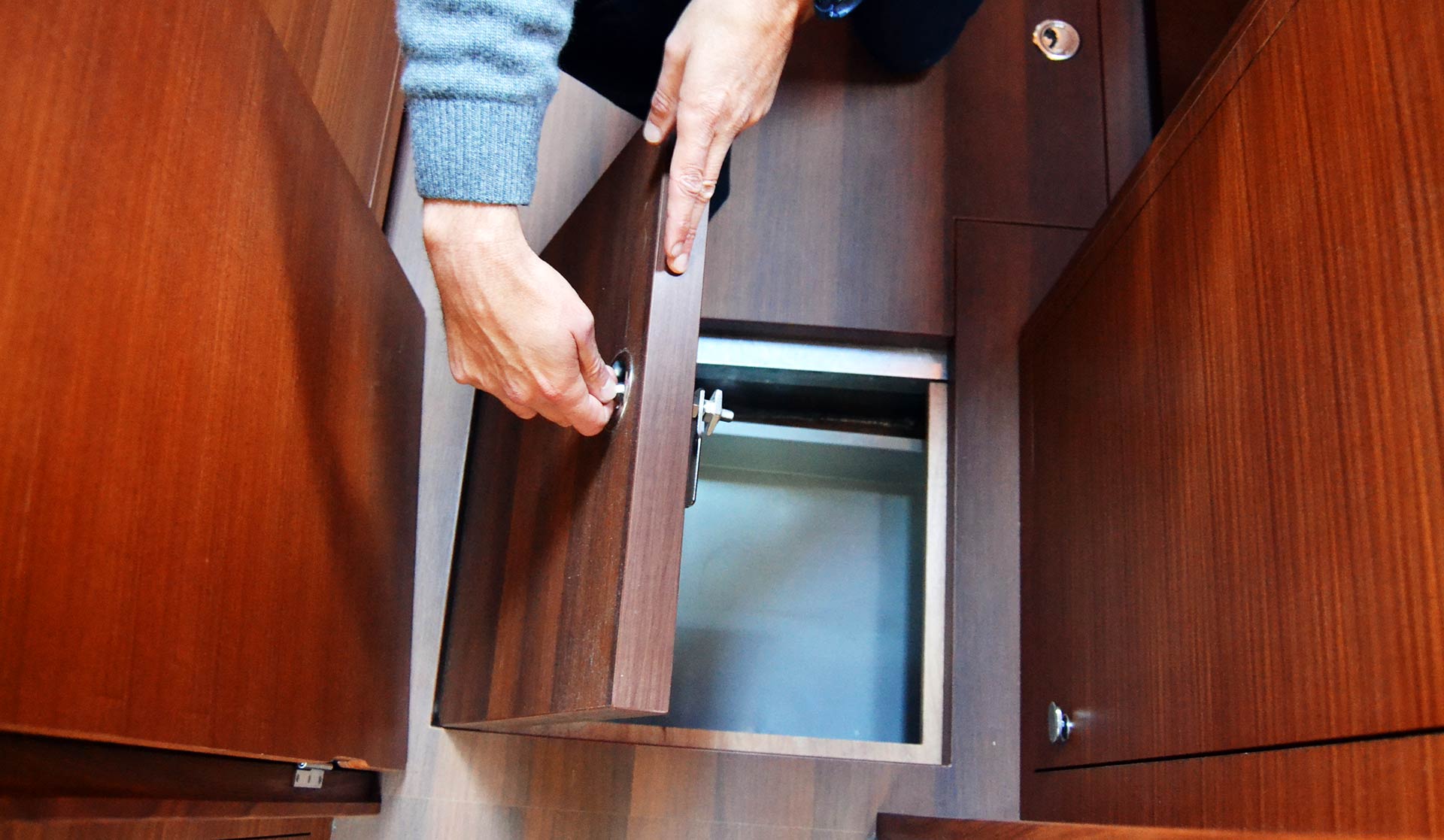
Back in the Garcia Exploration 52, a boat that has been delivered lately and awaits her maiden voyage in spring next year, Cyrille kneels down and opens a floor board: “These are not just wooden floor boards. As you have seen, we do insulate the boat´s hull just to the level of the walking deck below. To close the hull´s insulation, we constructed these floor boards which are super thick and have the same 7 centimetre-insulation inside you´ve seen on the hull.” Amazing!
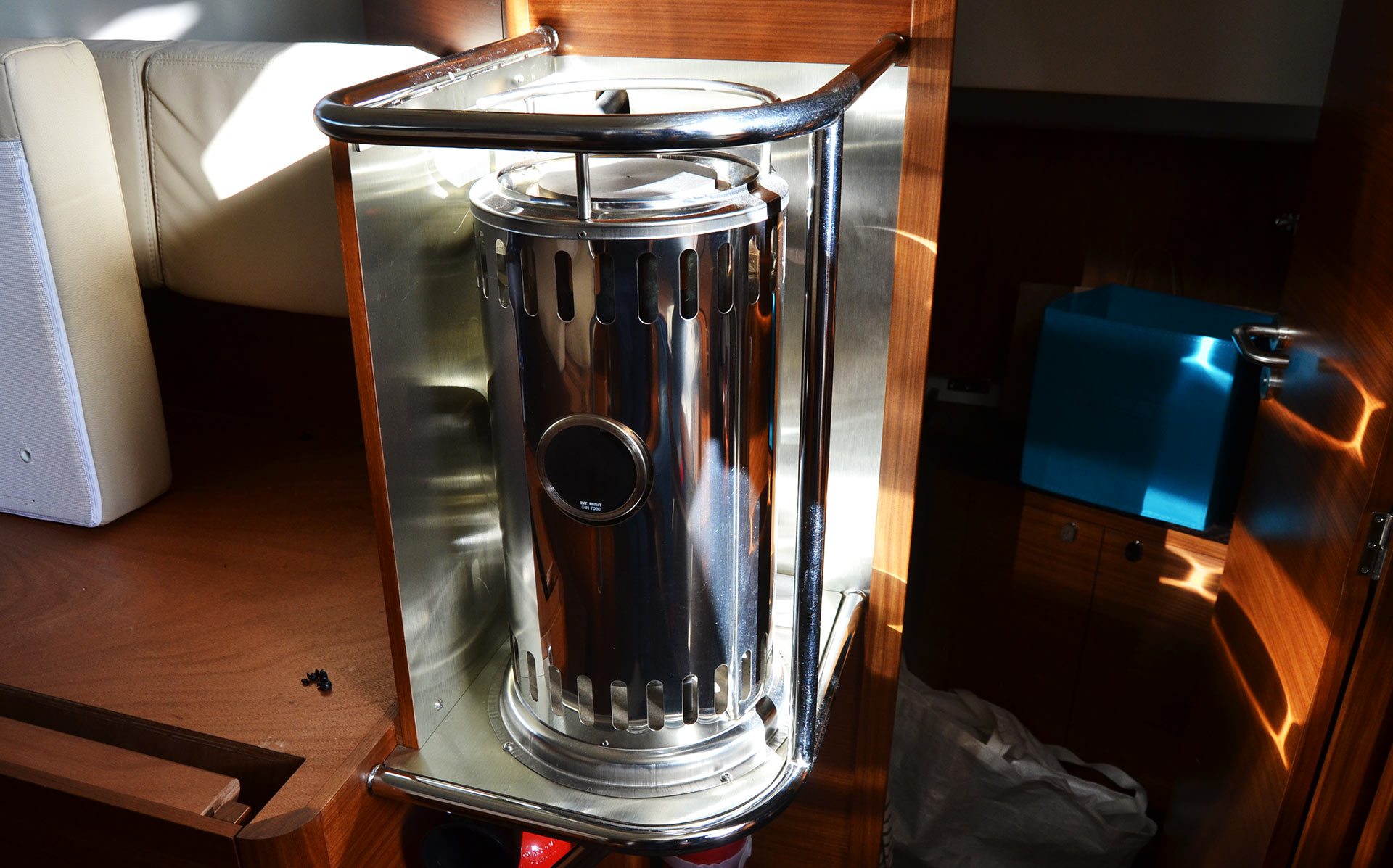
In high latitudes ordinary yacht heating systems won´t really be sufficient to create a warm, stable inside environment for the crews and since Garcia boats are made to stay up (or down) there for longer, something more appropriate must be installed. That´s the Reflex oven which I not just find perfectly stylish for a boat like this but I know that these things can supply the radiators mounted in each of the cabins with sufficient heat.

Real ships for real sailors
As all of the finished boats I saw have already been handed over to their owners I refrained from taking pictures of the cabins (and you might as well check the yard´s websites to see them even better photographed that I would be able to do it), but there are some interior details I want to talk about to show the level of thought and craftsmanship that goes into these boats.
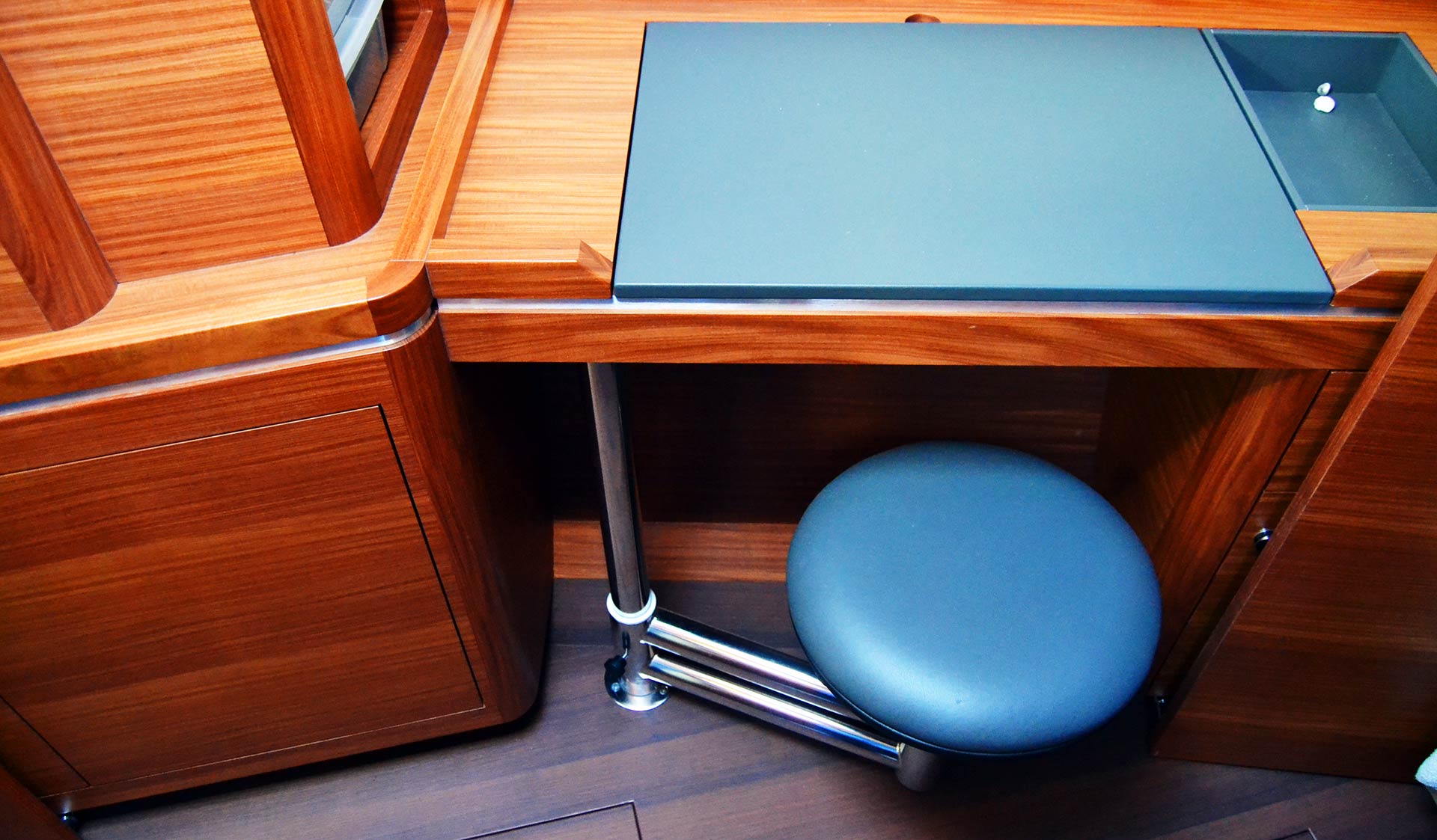
For example, in the Garcia Exploration 52 there´s a full fledged office desk with a nice rigid stool at port side of the owner´s cabin. The wood grain, if you look closely, of all of the furniture fittings is seamless and wooden front covers seem to be made from one single piece. Corners are well-rounded, lots of massive wooden fittings. This is an interior made to last. A true owner´s designed boat. The yard goes as far as it can to make happen owner´s wishes. On this particular boat, for example, the aft cabin has been fitted to house another office instead of berths …
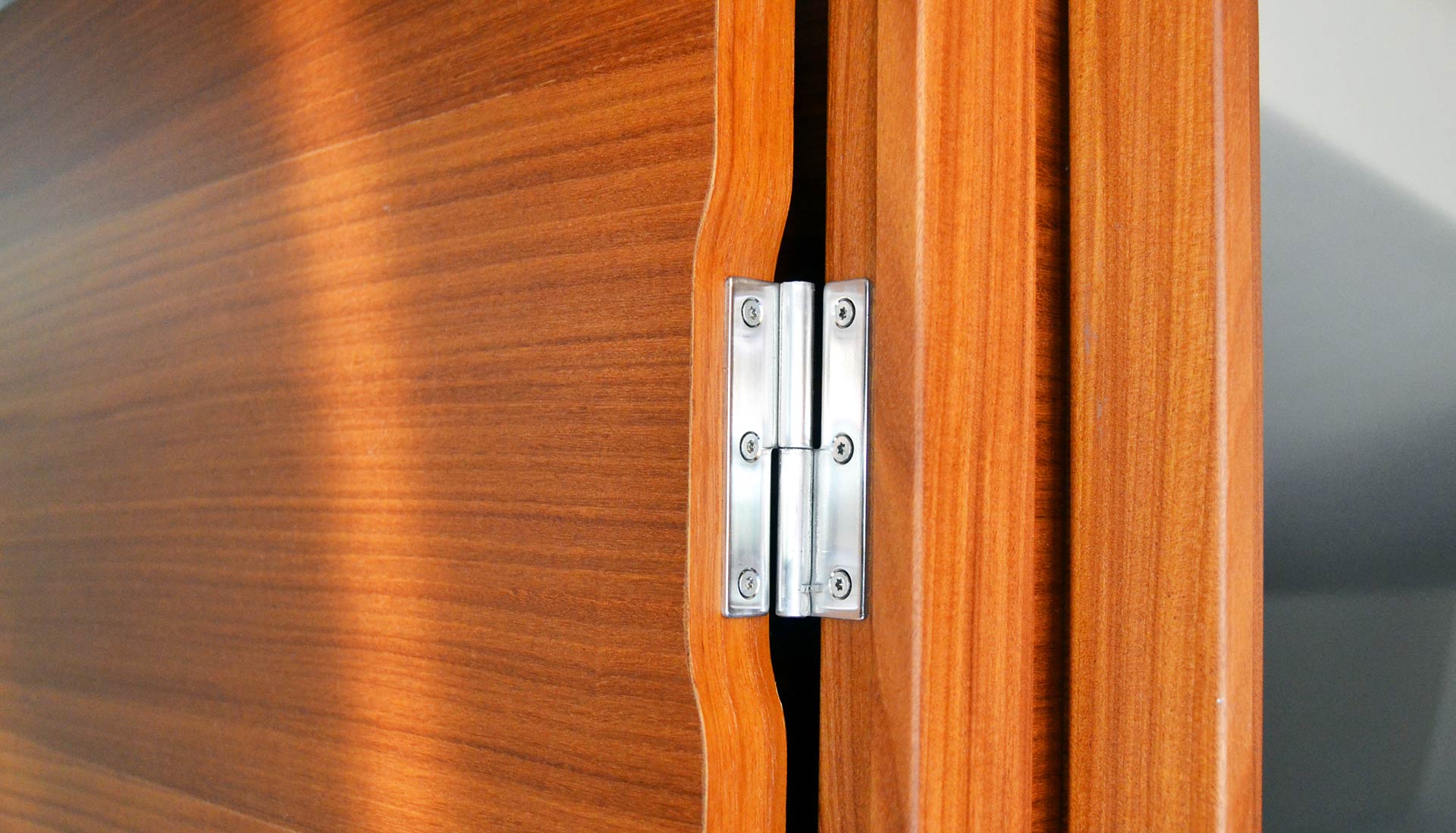
Even veneered parts, like for example the doors and the pivots, are made with care and eye for beauty. I know from boat companies where the yachts are made in far greater numbers and way faster that making round shapes is a pain in the ass for industrialized products, no matter if it’s a galley, a table or a simple corner of a piece of furniture. So here´s lots of handcrafted effort.
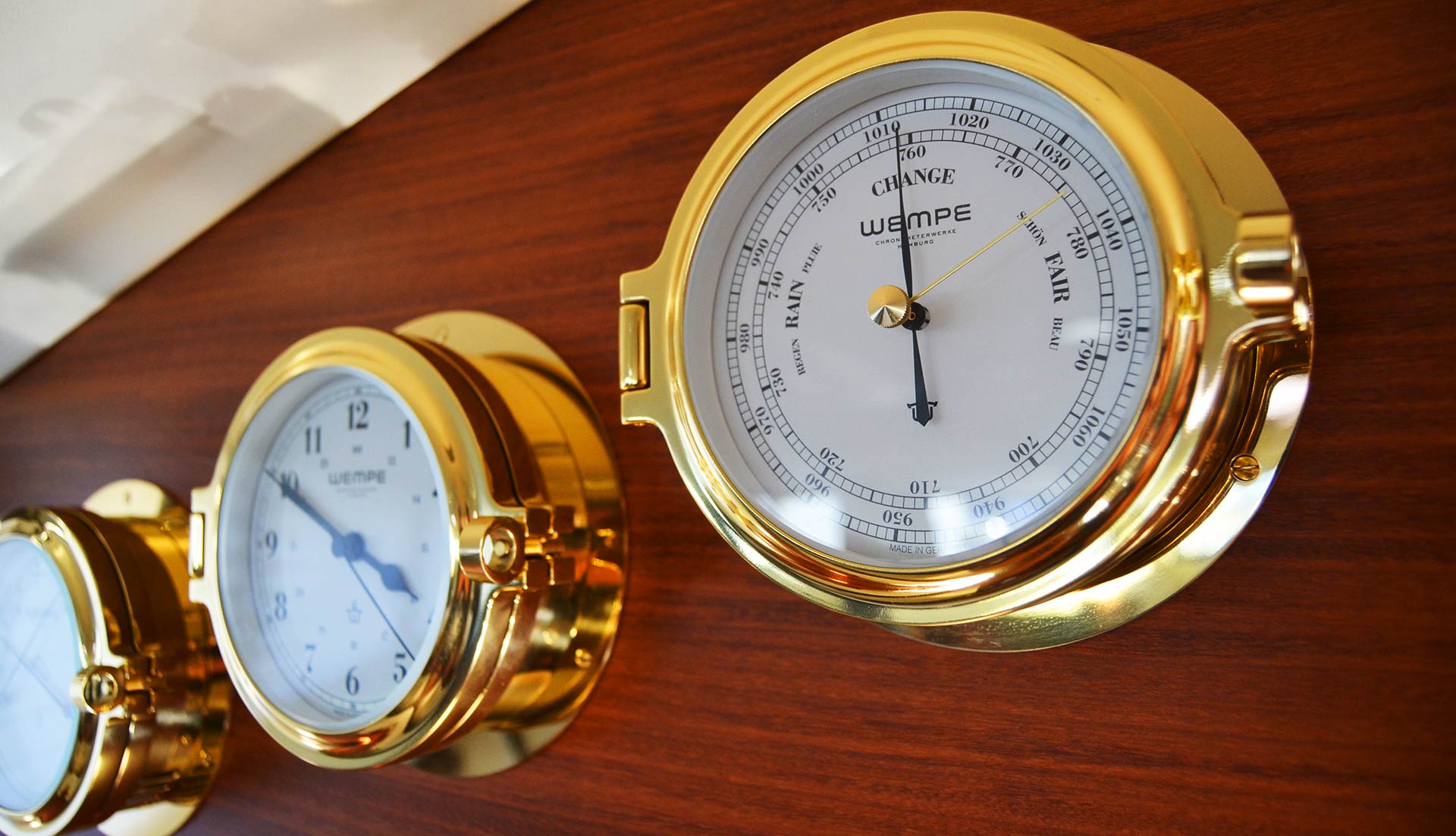
Which by the way can also be seen when looking at production- and delivery times: For example, a 46-footer of Beneteau will be on the production line from starting of lamination to actual delivery of the boat for 20 to 30 days in general. A boat like the Garcia will be built in a matter of months, let alone delivery time of a Garcia right now is 18 months due to a good capacity utilization and order status of the yard, which is good news to hear.
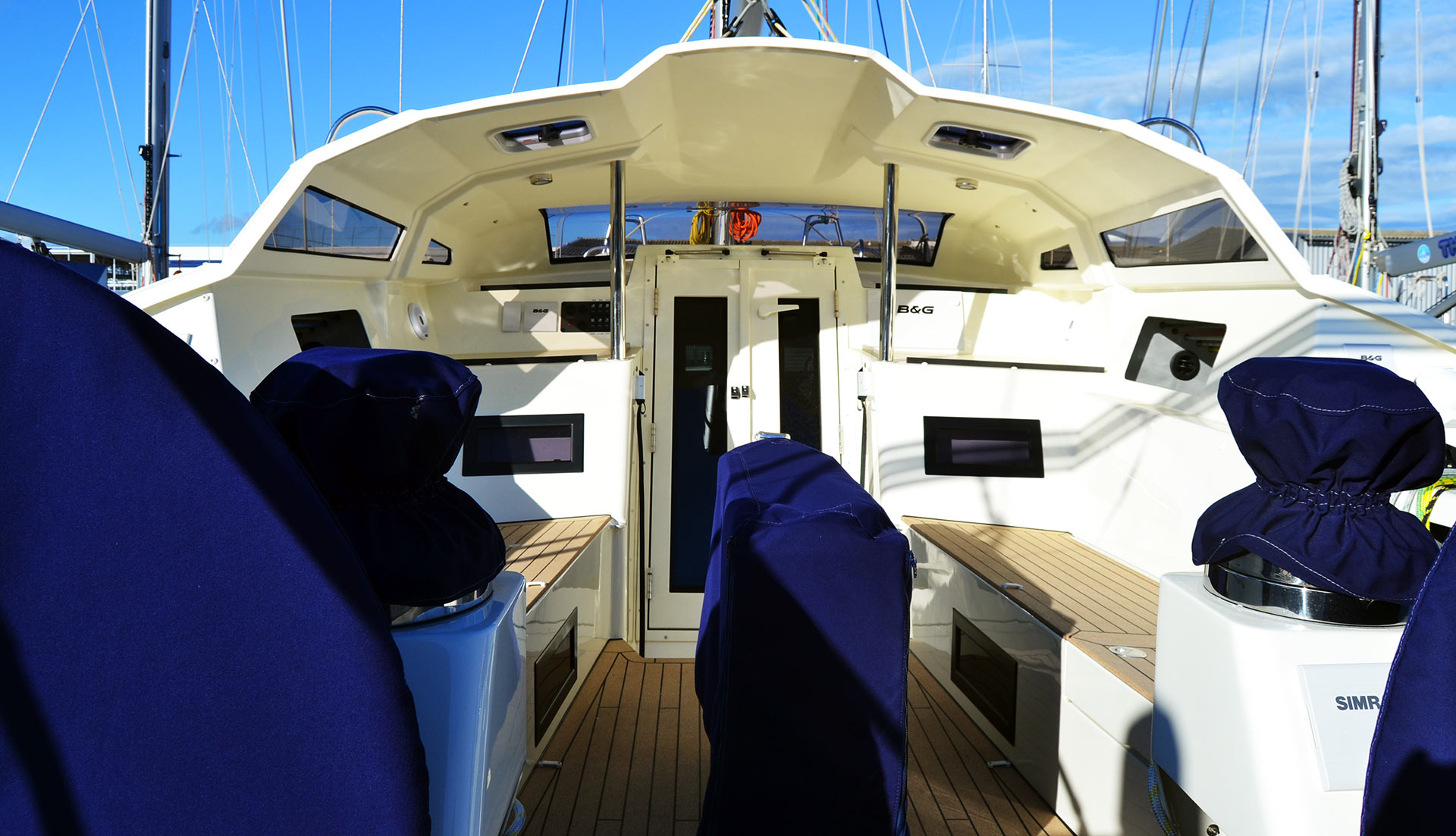
In the end I thank Cyrille and the workers at Allures/Garcia in Cherbourg for this intimate insight in the production process and the detailed clarification of what the difference of both boats really is. As I am standing in the sheltered though large cockpit of the Garcia Exploration 52 and imagine myself arriving in Nunavut half way through the Northwest-Passage I can barely imagine a better suited boat for a trip like this than this well built, well thought-through Normandy-made Garcia yacht.
Like the idea of a rigid aluminium sailing yacht? Try these articles too:
Aluminium marvel: A Berckemeyer BM 49 Pilot House is in the making
Talking to Marc Lombard on his Cigale 16 design
Walkthrough in the Gulliver 57: True giant ship


